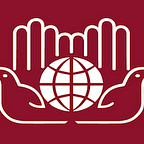An Overview of Disarmament, Demobilization and Reintegration
What happens after a civil war? When conflict within a country ends, the state faces the difficult task of rebuilding what has been destroyed by fighting: infrastructure, systems of governance, and the peace and security of its citizens. Peacebuilding and peacekeeping missions led by the United Nations, in tandem with national governments and organizations, cover a range of issue areas such as security sector reform, government restructuring, and addressing humanitarian crises. Disarmament, demobilization and reintegration (DDR) is “a process of removing weapons from the hands of members of armed groups, taking these combatants out of their groups and helping them to reintegrate as civilians into society,” and it is a crucial part of the process of transitioning from conflict to peace. The three stages of DDR overlap in time and happen within the framework of broader peacebuilding and recovery initiatives. In order to carry out successful DDR programs, there must be trust and political willingness to participate from all sides.
Disarmament concerns the removal, redistribution, and destruction of weapons within a conflict zone. It usually occurs in assembly areas, where fighters are gathered and turn in their weapons. Turning in a weapon is sometimes a prerequisite for enrolling in a DDR program and receiving other services, but most disarmament programs define eligibility by membership in an armed group. In this stage, it is essential that both sides disarm simultaneously; combatants will be unwilling to give up their weapons if their opponents can keep theirs and therefore cause a power imbalance. According to the Institute for Inclusive Security, it is estimated that there are over 600 million small arms and light weapons circulating worldwide. Because weapons are widely dispersed, easily concealed, and transported across borders, it can be challenging to keep track and fully disarm.
The UN defines demobilization as “the formal and controlled discharge of active combatants from armed forces or other armed groups,” which entails disbanding army groups or reducing their numbers. Individual ex-combatants are processed in temporary centers, and they then receive transitional assistance such as cash allowances, food, clothes, and other basic materials to facilitate their return to civilian life. They may also receive briefings and counseling before returning to their communities.
Reintegration is the last and ongoing step, where ex-combatants rejoin civilian life; it is a process that takes place at the local level. Job placement services, scholarship programs, and skills training all help former fighters to rejoin the community. Long-term support in the form of psychological and medical assistance can also help mitigate war-related trauma and distress. Reintegration and rehabilitation are the least studied and least funded parts of DDR, although they may be the most important in preventing fighting from resuming.
The UN frequently oversees DDR missions, and it has carried out and supported programs in more than 20 countries since 1989. DDR is currently a part of UN Peacekeeping Operations in the Central African Republic, Darfur, the Democratic Republic of Congo, Haiti, Mali, and South Sudan; it also supports DDR programs in Colombia, Libya, Somalia, Syria, and Yemen. The Integrated Disarmament, Demobilization and Reintegration Standards (IDDRS) were developed in 2006 to improve coordination and effectiveness of DDR programs, and to supply a common strategic framework. In addition to these UN initiatives, national governments, international organizations, and local non-governmental organizations are usually directly involved in designing and implementing DDR programs.
DDR is a relatively new framework for addressing post-conflict situations and has had varying success in preventing future violence. DDR programs have improved over time, as they increasingly focus on communities, demobilize both the military and informal armed groups, and acknowledge the importance of multi-dimensional reintegration. These programs look vastly different as they adapt to specific contexts, although some factors, such as synergy between local and international actors, seem to result in more success. DDR cannot resolve conflicts by itself; however, it can “help establish a secure environment so that other elements of a recovery and peacebuilding strategy can proceed.”
Written By Lydia Henning, Refuge Press Intern, Summer 2019
About the IIHA
The Institute of International Humanitarian Affairs (IIHA) prepares current and future aid workers with the knowledge and skills needed to respond effectively in times of humanitarian crisis and disaster. Our courses are borne of an interdisciplinary curriculum that combines academic theory with the practical experience of seasoned humanitarian professionals. The IIHA also publishes on a wide range of humanitarian topics and regularly hosts a number of events in the New York area, including the annual Humanitarian Blockchain Summit and Design for Humanity Summit.
For media inquiries, please contact: Camille Giacovas, Communications & Research Officer, IIHA cgiacovas@fordham.edu
